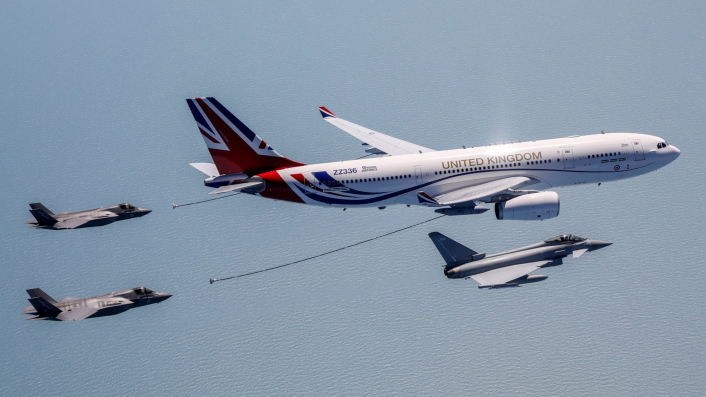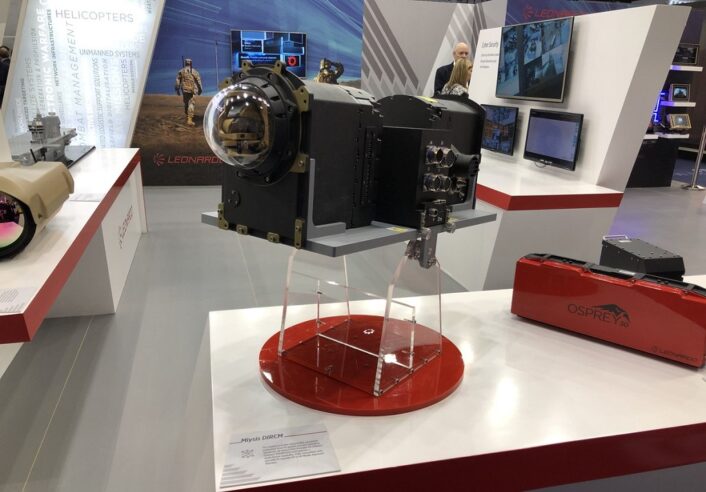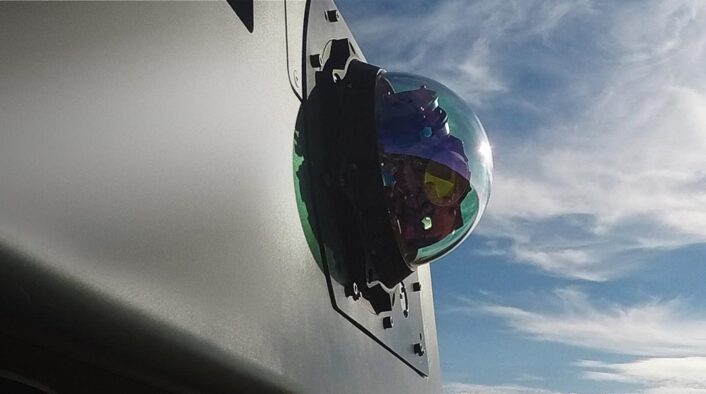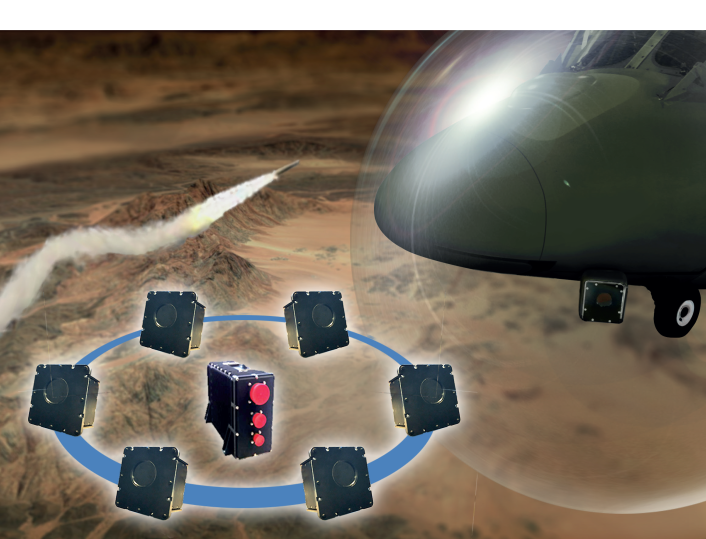Miysis and MAIR will equip an Airbus A330 selected by an undisclosed government operator to be used as VIP aircraft.
Leonardo has announced that its defensive systems have been chosen by an undisclosed government operator to equip a VIP aircraft. Specifically, the operator will have an Airbus A330 equipped with the Miysis DIRCM (Directional InfraRed Counter Measures) and the MAIR (Multi Aperture InfraRed) threat warning system by Jet Aviation at its MRO (Maintenance, Repair, and Operations) and completion facility.
The combination of Miysis DIRCM and MAIR enables the detection, tracking and defeat of multiple incoming missile threats simultaneously. “This provides an aircraft with a greater freedom of operation and, with Miysis DIRCM seeing a 100% success rate against all targets in live trials, the peace of mind that it can defend against both modern and legacy infrared missiles,” says Leonardo.
The company also added that Miysis DIRCM has no maintenance requirement once installed, and so benefits from minimal through-life costs. Furthermore, Miysis and MAIR are not subject to ITAR restrictions, providing customers with a greater level of control in how they wish to use their system.
The government operator that will receive this aircraft has not been disclosed, with the press release only mentioning that the A330 will be fitted by Jet Aviation. Notably, the rendering released by Leonardo with the news shows an A330 MRTT (Multi Role Tanker Transport), however it is unclear if this is just a placeholder or if it indicates an A330 MRTT being used also as VIP aircraft similarly to the Royal Air Force.

Miysis DIRCM
Miysis is a low-power-draw, low-weight DIRCM designed to provide high-power, all-aspect protection against modern and legacy threats. Miysis features a twin-head laser pointer/tracker system as a single head DIRCM does not provide the necessary level of spherical protection to defeat more advanced threats.
In fact, the airframe would mask some angles and create shadow zones where the DIRCM would not be able to “see” the threat, putting the aircraft at risk. The company says that a three-head system is also available for coverage on large platforms with high-value missions.
The development of Miysis capitalised heavily on key IR sensor, laser and sightline control technologies made available from Leonardo’s internal advanced technology investments, combined with the latest open-architecture system concepts and MOTS/COTS (Military Off-The-Shelf/Commercial Off-The-Shelf) hardware. The open architecture design readily supports the integration of Miysis on any aircraft, either as a stand-alone DIRCM solution or as part of a broader Defensive Aids Suite (DAS), as well as allowing a quick integration with the accompanying Missile Warning System.
In fact, the primary goal of the DIRCM is to completely deny missile guidance and cause the MANPAD to miss by a very large distance and as early in the engagement as possible, in order to create the largest possible miss distance. The ability to jam a missile as soon as possible is also instrumental to allow a multiple threat scenario to be defeated effectively, even with only one laser firing on multiple targets. As an example, we can consider two missiles launched on the same side of the aircraft, so only one DIRCM turret would be able to see and engage them.
Leonardo believes that the Miysis DIRCM System is currently the smallest and lightest high Energy-on-Target, multi-turret, full DIRCM system available to the world market today, with a total system weight of less than 40 kg (excluding the MWS). It has a peak power draw of less than 1300W, and typically draws less than 600W during jamming with both heads, giving it the lowest aircraft power requirements of any comparable system.

The functioning mechanism can be explained as follows: when a missile is launched, the MWS sensors detect the IR-signature of its rocket motor. The control unit then cues the DIRCM to the detected IR-track, quickly examining it to determine if it presents a threat to the aircraft. If the track is recognized as an immediate danger, the DIRCM begins the jamming action directing its laser energy on the missile’s seeker, disturbing its guidance as needed to protect the aircraft.
The baseline Miysis DIRCM System comprises two integrated Laser Pointer/Trackers, a Single ruggedised COTS Control Electronics Unit and a Cockpit Interface Unit, and can be either installed directly in the airframe or in an external pod. The system as described is then integrated with a separate DIRCM-capable MWS, which is chosen by the customers according to their requirements. Miysis has already been tested with six different MWS systems, whose quick integration has been significantly simplified thanks to open architecture interfaces.
Recently, Miysis achieved a 100% success rate during live fire testing at the Vidsel Test Range in Sweden. The trial showed how the laser system was able to defeat multiple heat seeking missiles at the same time, highlighting the extremely fast reaction time of the system as well as its high levels of accuracy.
“Against the latest generation of Man-Portable Air Defence Systems (MANPADS) and/or multiple shots, it has been demonstrated that the faster, the better and the higher the energy, the better,” said Tom Nash, Campaign Manager at Leonardo. Miysis also features fully synchronised multi-head operation, which enables the system to seamlessly pass the jamming action if the threat passes from one head coverage area to the other.
You can read more about Miysis in this in-depth article published here at The Aviationist in 2021.

MAIR threat warning system
The MAIR (Multi Aperture InfraRed) is described as a “distributed aperture” threat warning system, which fuses data from between infrared cameras to simultaneously detect and track incoming missiles, as well as hostile gunfire threats, via their heat signatures. The system is scalable composed at least by 5 interconnected optical heads, which allow to cover 360 degree in azimuth and 270 in elevation around the hosting platform, with an optional sixth head completing the 360 degree coverage also in elevation.
Thanks to the new generation IR detector technology, Leonardo says MAIR achieves high missile warning performance in a light, compact and low power consumption design. The company also added that MAIR provides immediate warnings, high detection probability and very low false alarm rate in heavy cluttered scenarios.
The IR technology allows the detection of threats at their very early stage thus providing a longer timeframe for counteraction, making MAIR a DIRCM-capable system. The DIRCM-capable prefix is important, as generally the MWS requires a number of modifications to optimize its performance within a DIRCM System.
For example, a rapid threat declaration is essential to minimize the time between missile launch and jamming laser energy hitting the missile’s seeker, especially for short range missile engagements. This requires significant changes to the software, resulting in a rapid, high probability of detection, often at the expense of a higher false alarm rate.

MAIR and Miysis are considered complementary systems and MAIR’s rapid response time and accurate tracking at long range have been proved during a successful trials campaign. The company has already conducted successful integration tests in the DIRCM System Integration Laboratory at Edinburgh to prove that the systems can work seamlessly together. This way, Leonardo can also deliver a complete IR threat-warning/threat-defeat system incorporating both MAIR and Miysis.








